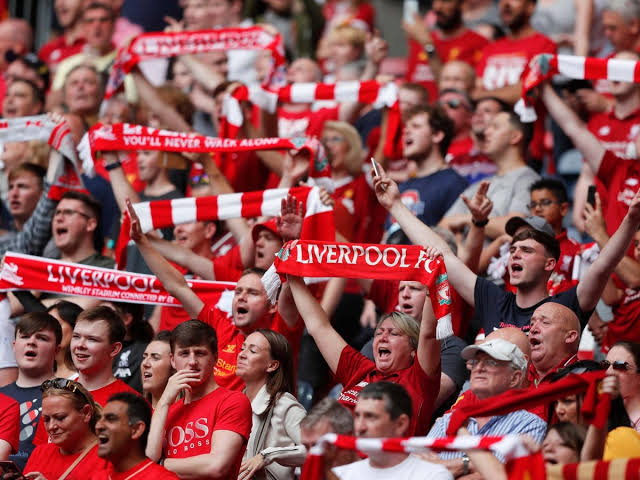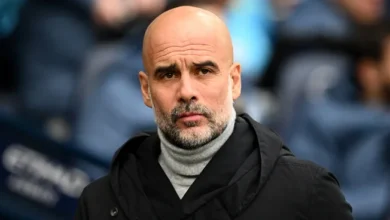Liverpool’s Ongoing Transfer Revolution: A Summer of Unprecedented Activity

The summer transfer window has proven to be nothing short of transformative for Liverpool Football Club, with the Reds demonstrating an ambition and financial commitment that suggests their business is far from complete. Under the strategic guidance of new head coach Arne Slot and sporting director Richard Hughes, the club has embarked on what could potentially become the most significant recruitment drive in its modern history, with clear indications that record-breaking expenditure may well be on the horizon.
The arrival of Arne Slot as Liverpool’s new head coach has ushered in a fresh philosophy and approach to squad building that differs markedly from the methodical, often cautious transfer strategies of previous years. Working in tandem with Richard Hughes, who brings his own vision of modern football recruitment, the duo has orchestrated a summer spending spree that has already seen six new faces arrive at Anfield, each carefully selected to address specific tactical requirements and squad deficiencies that became apparent during the previous campaign.
This level of activity represents a seismic shift in Liverpool’s transfer approach, moving away from the traditional model of making one or two marquee signings per window to a more comprehensive overhaul that touches multiple areas of the squad simultaneously. The six acquisitions completed thus far span various positions and represent different types of signings – from experienced internationals who can make an immediate impact to promising young talents who represent long-term investments in the club’s future.
The strategic nature of these signings becomes even more apparent when viewed through the lens of Slot’s tactical preferences. Unlike his predecessor, who favored a high-intensity, gegenpressing style that demanded specific physical and mental attributes from players, Slot’s approach emphasizes technical proficiency, positional versatility, and intelligent movement both with and without the ball. This philosophical shift necessitates a different type of player profile, explaining why the club has been so active in reshaping its squad composition.
Liverpool’s willingness to invest heavily in new talent this summer represents a significant departure from the more restrained spending patterns that have characterized recent transfer windows. The club’s owners, Fenway Sports Group, appear to have sanctioned a level of expenditure that suggests they recognize the need for immediate investment to maintain competitiveness at the highest level of European football.
This increased financial commitment likely stems from several factors converging simultaneously. The expiration of several player contracts, combined with the need to refresh an aging squad in certain positions, has created both the financial space and tactical necessity for significant investment. Additionally, the competitive landscape of the Premier League continues to evolve, with rival clubs consistently raising the bar in terms of squad quality and depth, forcing Liverpool to respond with similar ambition.
The prospect of breaking the club’s transfer spending record – a benchmark that has stood for several years – no longer seems like a distant possibility but rather an inevitable outcome of the current recruitment strategy. When considering the cumulative value of the six signings already completed, combined with the additional targets reportedly on the club’s radar, the total investment could easily surpass any previous single-window expenditure in Liverpool’s history.
Beyond the headline-grabbing new arrivals, Liverpool’s summer transfer strategy reveals a sophisticated understanding of modern squad management principles. The simultaneous pursuit of new signings while actively seeking to offload existing players demonstrates a commitment to maintaining squad balance, both in terms of numbers and wage structure.
The impending departure of Luis Diaz to Bayern Munich exemplifies this balanced approach to transfer business. While losing a player of Diaz’s quality and potential might initially appear counterproductive, his exit serves multiple strategic purposes. Financially, his sale will generate significant funds that can be reinvested in other areas of the squad, while also freeing up a substantial portion of the wage budget for new acquisitions. From a tactical perspective, Diaz’s departure creates space for new players who may be better suited to Slot’s preferred system and style of play.
This philosophy of strategic player turnover reflects a more dynamic approach to squad building, one that recognizes the need for constant evolution and adaptation in modern football. Rather than simply adding to an existing core of players, Liverpool appears committed to actively shaping and reshaping its squad composition to ensure optimal balance and functionality within Slot’s tactical framework.
The decision to allow certain players to leave while simultaneously bringing in replacements also demonstrates confidence in the club’s recruitment strategy and scouting network. It suggests that Hughes and his team have identified specific targets who they believe will not only replace the outgoing players’ contributions but potentially exceed them within the new tactical system.
The extensive transfer activity becomes more comprehensible when viewed through the prism of tactical evolution that Slot’s appointment represents. His preferred style of play demands different attributes from players across various positions, necessitating adjustments to the squad composition that go beyond simple like-for-like replacements.
In defense, Slot’s system requires center-backs who are comfortable receiving the ball under pressure and capable of playing precise passes into midfield to initiate attacking moves. This emphasis on ball-playing ability has likely influenced the profile of defensive targets, with technical proficiency becoming as important as traditional defensive attributes.
The midfield undergoes perhaps the most significant transformation under Slot’s guidance, with greater emphasis placed on positional discipline and tactical intelligence rather than the relentless energy and pressing intensity that characterized previous systems. This shift requires players who excel in tight spaces, can manipulate the ball effectively under pressure, and possess the vision to execute quick, accurate passes that break opposition lines.
In attacking areas, Slot’s preference for fluid movement and interchangeable positions demands forwards who are comfortable operating across the entire width of the pitch and capable of contributing both goals and assists. This versatility requirement explains why some existing players may no longer fit the tactical blueprint, while new signings have been selected specifically for their ability to operate in multiple positions and situations.
Liverpool’s aggressive transfer approach this summer also reflects the increasingly competitive nature of the modern transfer market, where clubs must act decisively to secure their primary targets. The financial muscle of competing clubs, particularly those backed by state ownership or significant private investment, has created an environment where hesitation or prolonged negotiations often result in missing out on key targets.
By moving quickly and decisively in the transfer market, Liverpool has demonstrated its intention to compete at the highest level of this arms race. The willingness to meet asking prices and conclude deals efficiently sends a clear message to both current and potential players about the club’s ambitions and commitment to success.
This proactive approach extends beyond simply securing new signings to encompass the entire transfer strategy, including the timing of player sales and the coordination of incoming and outgoing transfers. The synchronization of these various elements requires sophisticated planning and execution, suggesting that Liverpool’s transfer operations have become increasingly professional and strategic in their approach.
The challenge of successfully integrating six new players into an existing squad structure represents one of the most significant aspects of Liverpool’s summer transfer strategy. Unlike previous windows where one or two new signings could be gradually introduced to the team’s playing style and tactical approach, the current situation demands a more comprehensive integration process.
Slot’s reputation as an excellent coach of individual players suggests he is well-equipped to handle this challenge. His experience in developing players and adapting their skills to fit specific tactical requirements will be crucial in ensuring that the new arrivals can quickly contribute to the team’s objectives. The pre-season period becomes particularly important in this context, providing valuable time for new players to understand their roles within the system and build relationships with their teammates.
The variety of profiles among the new signings also offers Slot flexibility in how he approaches their integration. Some players may be ready to make immediate contributions to the first team, while others might benefit from a more gradual introduction that allows them to adapt to the demands of English football and Liverpool’s specific playing style.
Beyond the immediate impact of this summer’s transfer activity, Liverpool’s approach reveals a clear long-term vision for the club’s development. The combination of experienced players who can contribute immediately with younger talents who represent future potential suggests a strategy designed to maintain competitiveness both in the short and long term.
This balanced approach to recruitment reflects lessons learned from previous transfer windows and demonstrates a sophisticated understanding of squad building principles. Rather than focusing exclusively on immediate needs or future potential, Liverpool appears committed to maintaining a squad composition that can compete at the highest level while simultaneously developing the next generation of talent.
The financial investment required to execute this strategy represents a significant commitment from the club’s ownership, one that signals their belief in both Slot’s vision and the broader strategic direction of the football club. This level of backing provides the foundation for sustained success and positions Liverpool to compete with the very best clubs in world football.
With several weeks remaining in the transfer window, Liverpool’s recruitment team continues to work on additional signings that could further strengthen the squad. The identification of specific targets in key positions suggests that the club’s analysis of its needs extends beyond the six players already acquired.
The ongoing pursuit of additional players also demonstrates the thoroughness of Liverpool’s approach to squad building. Rather than rushing to complete deals simply to increase squad numbers, the club appears committed to finding the right players who fit both the tactical requirements and cultural values that define the organization.
This patient yet ambitious approach to the remaining transfer business reflects the confidence that Hughes and Slot have in their recruitment strategy. They understand that the right additions at this stage of the window could prove crucial in determining the success of their overall project.
Liverpool’s summer transfer activity represents far more than a simple refresh of playing personnel; it constitutes a comprehensive reimagining of the club’s approach to squad building and tactical development. Under the guidance of Arne Slot and Richard Hughes, the club has demonstrated unprecedented ambition in the transfer market, backing their new philosophy with significant financial investment and strategic thinking.
The six signings completed thus far, combined with the ongoing pursuit of additional targets and the strategic departure of players like Luis Diaz, paint a picture of a club in transition – one that recognizes the need for evolution while maintaining its commitment to the highest standards of performance and achievement.
As the transfer window progresses, Liverpool’s business appears far from complete. The potential for record-breaking expenditure reflects not just the club’s ambition but also the recognition that success in modern football requires continuous investment and adaptation. With Slot’s tactical vision providing the framework and Hughes’ recruitment expertise guiding the execution, Liverpool appears well-positioned to emerge from this transformative summer stronger, more versatile, and better equipped to compete at the pinnacle of world football.
The true measure of this summer’s activity will ultimately be determined on the pitch, but the foundations being laid through this comprehensive recruitment drive suggest that Liverpool is serious about returning to the very summit of domestic and European competition. The investment in both immediate impact and long-term potential reflects a club with clear vision, substantial ambition, and the resources necessary to achieve its objectives in an increasingly competitive football landscape.















